
Search archive
NSW freight company fined for leaking sulphuric acid
22/01/2016
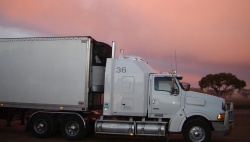
NSW EPA has fined Cary's Freight Lines $10,000 for failing to safely transport dangerous goods, following an incident in September 2015.
The company was shipping partly empty drums of sulphuric acid within a container on the New England Highway when a drum was damaged and began to leak. NSW EPA was notified by a phone call from a member of the public and attended the incident. They worked with NSW Fire and Rescue and NSW Roads and Maritime Services to contain the leak inside the shipping container. There were no impacts on the surrounding environment.
An investigation by NSW EPA confirmed that Cary's Freight Lines was responsible for loading the drums, and for ensuring the dangerous materials were transported safely and securely.
AELERT member and EPA NSW manager, Adam Gilligan, said that there was a potential for serious impact due to the hazardous nature of the chemical.
“It was very in lucky in this instance that the leak was relatively minor and did not result in any health or environmental impacts"
"Failing [to secure hazardous materials] not only puts at risk drivers and people working in the transport chain but can also endanger...other road users, including emergency service officers called [to] clean-up. There is also a real risk to the environment if acid enters streams or sensitive areas, such as wetlands,” he said.
Want to know more? Read EPA NSW's official Media Release.
Single Tau fly triggers MPI investigation
22/01/2016

New Zealand's Ministry for Primary Industries (MPI) is investigating the presence of Tau fly in the Auckland area, after a single fly was caught in a surveillance trap.
Tau fly is usually found in South East and Southern Asia, preferring tropical climates. MPI biosecurity staff say that the presence of one fly does not indicate an outbreak.
“We have a significant number of traps in this area which were all checked yesterday. No other flies were found" said Brendan Gould, MPI's Manager of Surveillance and Incursion Investigation.
"We have teams in the field now setting additional traps to determine if other flies are in the area, and they will take actions to prevent spread out of the area if more flies are found" he said.
The Tau fly is not as damaging as the Queensland Fruit Fly, being limited to fewer host materials including cucumber, pumpkin and zucchini. MPI has instigated precautionary measures, putting controls on the movement of certain fruit and vegetables within a 1.5km radius of the trap.
While the measures may cause some inconvenience to the local community, MPI is confident in their support.
“Based on our experiences with Queensland fruit fly last year, our operations have shown that public support is vital to success and we have always had terrific community buy-in,” Mr Gould said.
The restrictions will be in place for a minimum of two weeks. MPI monitors a network of 7,600 lure traps on a regular basis as part of their biosecurity system.
More information:
- MPI media release
- MPI public engagement page regarding the find.
Image courtesy of MPI.
To world's end: UK, Aus and NZ join forces on fisheries patrol
20/01/2016
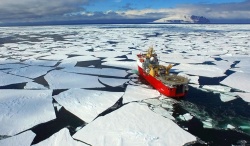
Australia and New Zealand recently joined a British Navy patrol mission in the Southern Ocean, conducting inspections of fishing vessels in the area. Officers joined the HMS Protector in Hobart in early December 2015, and concluded in Christchurch on 20 January 2016. Australasian agencies involved in the patrol include:
- Australian Fisheries Management Authority (AFMA)
- Australian Border Force (ABF)
- New Zealand Defence Force
- Royal Australian Navy
- New Zealand Ministry for Primary Industries.
 The cooperative effort forms part of an international commitment to respond to illegal fishing in the Southern Ocean marine environment. Inspections were conducted of vessels that had been flagged to the Commission for Conservation of Antarctic Marine Living Resources members. No breaches were identified.
The cooperative effort forms part of an international commitment to respond to illegal fishing in the Southern Ocean marine environment. Inspections were conducted of vessels that had been flagged to the Commission for Conservation of Antarctic Marine Living Resources members. No breaches were identified.
It is the first time that a British Navy vessel has visited the East Antarctic since WWII. Kerry Smith, Acting General Manager, Fisheries Operations Branch, AFMA said international cooperation is vital in order to protect the sustainability of global fishing resources.
“Joint patrols like this one send a strong message that, by working together, we ensure our fisheries have a future,” she said.
 The crew also had a well deserved tourist stop, using a break in their mission to visit the historic hut of Captain Robert Falcon Scott on Cape Evans. In 1911 Captain Evans launched a doomed mission to the South Pole from the hut, ultimately leading to his death. The visiting sailors were led by a New Zealand Defence Force Liaison Officer, where they witnessed an untouched and sobering scene. The visitors attended a service in memory of those who died journeying to the South Pole, with a British Royal Navy officer stating that "it is humbling to think of what they went through in the name of discovery".
The crew also had a well deserved tourist stop, using a break in their mission to visit the historic hut of Captain Robert Falcon Scott on Cape Evans. In 1911 Captain Evans launched a doomed mission to the South Pole from the hut, ultimately leading to his death. The visiting sailors were led by a New Zealand Defence Force Liaison Officer, where they witnessed an untouched and sobering scene. The visitors attended a service in memory of those who died journeying to the South Pole, with a British Royal Navy officer stating that "it is humbling to think of what they went through in the name of discovery".
More information:
- AFMA media release.
- Read the Royal Navy's news post. Includes more pictures!
Images courtesy of the Royal Navy, UK.
Australia and Indonesia team up to tackle illegal fishing
14/01/2016
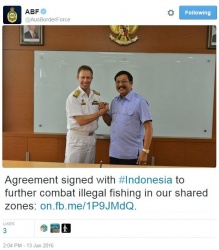
Australian has entered a Civil Maritime Enforcement and Security Partnership with Indonesia that aims to tackle unregulated fishing, piracy and other organised crime.
The partnership provides a framework for intelligence and information sharing, joint training and development, communications and operational cooperation. It is hoped that it will improve the surveillance of illegal fishing in Indonesian and Australian exclusive economic zones.
The agreement was signed by the Australian Border Force (ABF) and the Indonesian Ministry of Marine Affairs and Fisheries on 25 August 2015.
Read the official media release.
Recent illegal fishing activity
ABF continuously monitors illegal fishing activities in Australian Waters, and has had an extremely busy past 6 months. Here's some of their recent activity.
10 September 2015: Ghost net retrieved from Ashmore Reef
Marine Unit Officers from the ABF remove a ghost net (abandoned net) from the northern tip of the Ashmore Reef, preventing irreparable damage to native marine life and coral.
27 September 2015 - Boarded illegal fishing vessel Viking Officers board and search the internationally listed illegal and unregulated fishing vessel Viking after intercepting it 270 nautical miles off Christmas Island. The Australian Fisheries and Maritime Authority (AFMA) conduct further inquiries relating to the vessel's authority to fish, sharing their findings with INTERPOL and nations subscribed to the Regional Plan of Action (RPOA). Earlier in the year, the master of the Viking was found guilty of fisheries charges in Malaysia (April 2015).
Officers board and search the internationally listed illegal and unregulated fishing vessel Viking after intercepting it 270 nautical miles off Christmas Island. The Australian Fisheries and Maritime Authority (AFMA) conduct further inquiries relating to the vessel's authority to fish, sharing their findings with INTERPOL and nations subscribed to the Regional Plan of Action (RPOA). Earlier in the year, the master of the Viking was found guilty of fisheries charges in Malaysia (April 2015).
10 October 2015: Recovery of Shark Fins
In a collaborative effort, AFMA and Navy personnel search a fishing vessel intercepted by Border Force officers off the north coast of Western Australia. On board they locate 60 Shark Fins and 70kg of fish.
21 October 2015: Apprehension inside the Ashmore Reef National Nature Reserve Maritime Border Command officers partner with AFMA to apprehend a foreign fishing vessel inside the Ashmore Reef National Nature Reserve. They find 60kg of fresh fish, 80kg of fish on ice and a range of fishing equipment on board.
Maritime Border Command officers partner with AFMA to apprehend a foreign fishing vessel inside the Ashmore Reef National Nature Reserve. They find 60kg of fresh fish, 80kg of fish on ice and a range of fishing equipment on board.
13 November 2015: 400kg of fish found on Indonesian vessel
AFMA and Maritime Border Control once again team-up to apprehend an Indonesian vessel east of the Ashmore Islands. They locate over 400kg of fish on board and fishing equipment deployed in the water.
11 December 2015: New patrol position immediately sees results
ABF bolsters their presence in far north Queensland through the addition of a Bay Class patrol vessel in the area, and it immediately pays off. They apprehend three fishing vessels from Papua New Guinea (PNG) operating illegally on Warrior Reef in the Torres Strait. On board officers find approximately 350kg of sea cucumber, 5kg of squid, 3kg of octopus and a range of fishing equipment. 28 fishers from the three vessels are apprehended and transferred to the PNG Government.
Backyard solarium owner feels the heat
12/01/2016

An Adelaide man has become the first person to face court proceedings following the introduction of laws banning commercial tanning beds. The 27 year old faces fines of up to $10,000 for charging customers to use three tanning beds in his backyard.
The case, being prosecuted by SA EPA, will be watched closely by jurisdictions with similar legislation including New South Wales, Victoria, Tasmania, Queensland and the Australian Capital Territory.
SA EPA alleges that the man advertised to customers through social media, including Instagram and Facebook, where he traded under the name "Sharelarium". It is alleged that between 18 February 2015 and 3 March 2015 he was in possession of three Ergoline brand tanning units at his home. During this period he provided a tanning service to customers, for which he received payment. Such actions breach Regulation 5 of the Regulation Protection and Control (non-ionising radiation) Regulations 2013.
The man has yet to enter a plea, with the case being adjourned to 9 February 2016.
Media articles:
- Black market for suntans emerges following government bans on commercial use of solariums, news.com.au 13 Jan 2016
- Backyard tan man feels new law’s heat, The Advertiser 13 Jan 2016
Flood blackwater causes fish deaths and odours in NSW
12/01/2016

A collaborative effort is underway between NSW AELERT member agencies to monitor the extent and severity of fish deaths and odour in the Hunter Valley. The incident is a result of suspected 'blackwater', following a period of significant rainfall and flooding in the area.
The inundation occurred when water levels in local creeks and rivers peaked simultaneously, causing water to flow over low lying surrounding land and pick up decaying vegetation, dirt and other organic matter.
NSW EPA North Branch Director, Gary Davey, said that the natural flooding process depletes oxygen levels in waterways, resulting in a distinctive black colour. The stagnant water can cause fish deaths and a rotten egg smell.
"The hot weather we are currently experiencing is likely to exacerbate these odours," Mr Davey said.
NSW EPA is working closely with the Department of Primary Industries (DPI), Office of Environment and Heritage, Port Stephens Council and DPI Water to monitor the extent and severity of the impact.

Diagram courtesy of the Department of Environment.
Want to know more?
- Read the NSW EPA Media Release for more information.
- Find out about blackwater on the Department of Environment website.
Counteraction to Counterfeit and Contraband Pesticides
06/01/2016
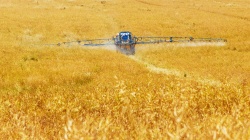
Article Credit: Tamara Kutonova, OSCE Secretariat
The Organization for Security and Co-operation in Europe (OSCE), recently released a publication that describes the most commonly used methods of smuggling pesticides. The paper, Counteraction to Counterfeit and Сontraband Pesticides. Methodology, also presents a methodology to combat counterfeit and contraband pesticides, using a holistic approach that includes prevention, preparedness and response to crime.
According to various estimates, the share of counterfeit pesticides on the global pesticide market is as high as 25%, with about 70% of this coming in small packages for private agricultural producers and small farmers. The use of counterfeit pesticides pose a threat to human life and health and to the environment. Detected counterfeit pesticides are subject to destruction, as they are classified as a hazardous waste are dangerous when accumulated in storage. In spite of all efforts made, counterfeit pesticides often return to the market under new branding.
Customs risk analysis and management systems are at the forefront of anti-counterfeiting and anti-smuggling efforts. All customs, regardless of whether a particular country is, or is not, a Party to the Convention on the Simplification and Harmonization of Customs Procedures (Kyoto Convention, 1973), use some form of risk management and implementing procedures to detect illegal activities. Some parameters for customs risk profiles for transboundary movements of pesticides include:
- correct classification of goods and their quantitative weight and characteristics,
- documenting the customs value of goods,
- tracking unusual and difficult routes,
- monitoring trade activities of companies with a negative history, and
- researching the origins of transported products.
Raising public awareness is another key element of an effective trafficking prevention strategy.
It is essential to ensure the involvement of responsible businesses, social activists, and international organisations, as well as the development of inter-agency and international cooperation. The effectiveness of anti-counterfeiting and anti-smuggling activities greatly depends on interdepartmental and intergovernmental cooperation (particularly between customs authorities of different countries), communication with businesses, civil society and international organisations.
Download the full OSCE Article
"Stop rubbishing our prime fishing spots" says EPA Tas
04/01/2016
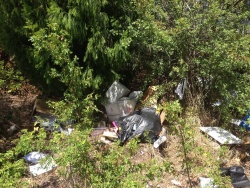
Environment Protection Authority Tasmania has fined two men for separate incidents of illegal dumping at a popular fishing spot on the River Derwent. EPA Director and AELERT Jurisdictional Representative, Wes Ford, said that the rubbish included food and sanitary items, resulting in a biohazard and posing a risk to human health and the environment.
The incidents occurred on land under a 'private property access agreement', potentially jeopardising the community's access to the area. The access, which requires the landowner's ongoing agreement, was negotiated by the Inland Fisheries Service to provide recreational anglers with access to the river edge. The location is unique as it is one of only a few places where vehicles can be driven to the water's edge.
Director of Inland Fisheries, Mr John Diggle, said that the behaviour of rubbishers was antisocial.
"Most recreational anglers know that access is a privilege not a right, it’s disappointing that the behaviour of a few individuals might ruin it for the majority" he said.
The offenders were issued with a $770 fine for the dumping, and a $154 fine for discarding takeaway rubbish out of the car window.

